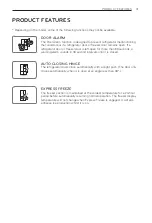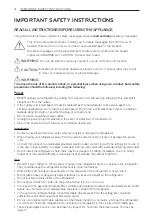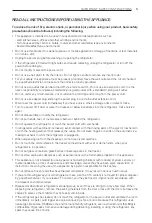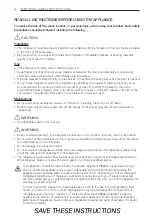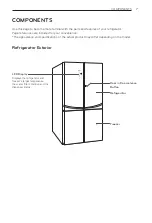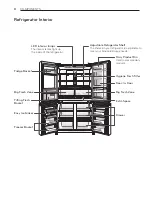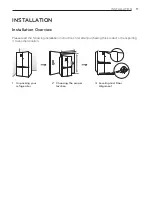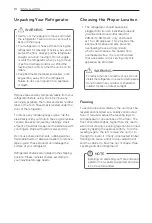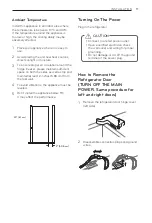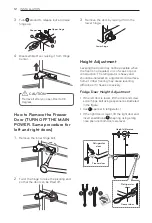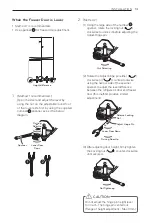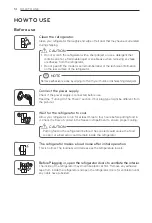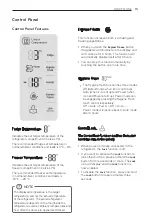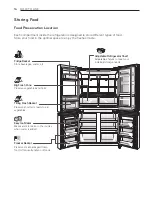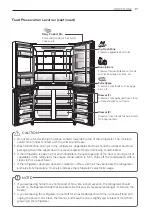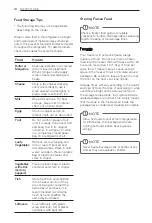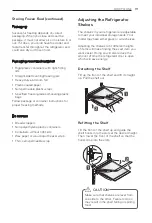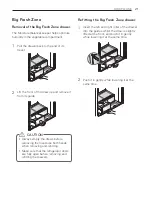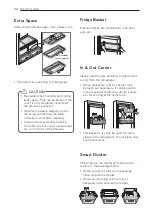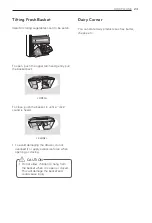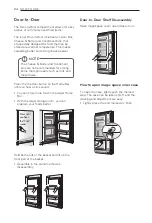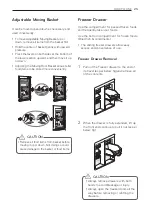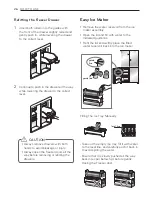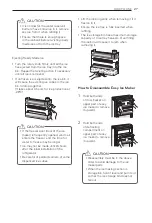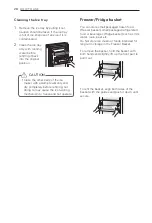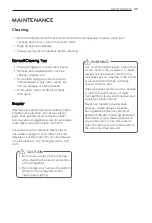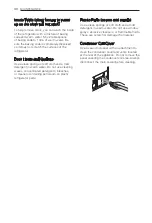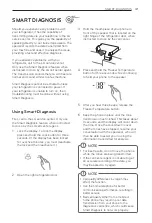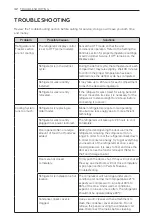
17
HOW TO USE
Food Preservation Location (continued)
CAUTiON
Do not store food with high moisture content towards the top of the refrigerator. The moisture
y
could come in direct contact with the cold air and freeze.
Wash food before storing it in the refrigerator. Vegetables and fruit should be washed, and food
y
packaging should be wiped down to prevent adjacent foods from being contaminated.
If the refrigerator is kept in a hot and humid place, frequent opening of the door or storing a lot of
y
vegetables in the refrigerator may cause condensation to form. Wipe off the condensation with a
clean cloth or a paper towel.
If the refrigerator doors are opened or closed too often, warm air may penetrate the refrigerator
y
and raise its temperature. It can also increase the refrigerator’s electricity usage.
NOTE
If you are leaving home for a short period of time, like a short vacation, the refrigerator should
y
be left on. Refrigerated foods that are able to be frozen will stay preserved longer if stored in the
freezer.
If you are leaving the refrigerator turned off for an extended period of time, remove all food and
y
unplug the power cord. Clean the interior, and leave the doors slightly ajar to prevent mold from
growing in the refrigerator.
Dairy Product Bin
Store diary foods such as butter,
cheese, etc.
Big Fresh Zone
Preserve vegetables and fruits.
Extra Space
Preserve small foods such as eggs,
ham, etc.
Drawer (2)
Preserve frozen foods that are stored
for longer periods.
Drawer (1)
Preserve small packaged frozen food
or frequently-taken out foods.
Door-In-Door
Preserve frequently-taken out foods
such as beverages, snacks, etc.

